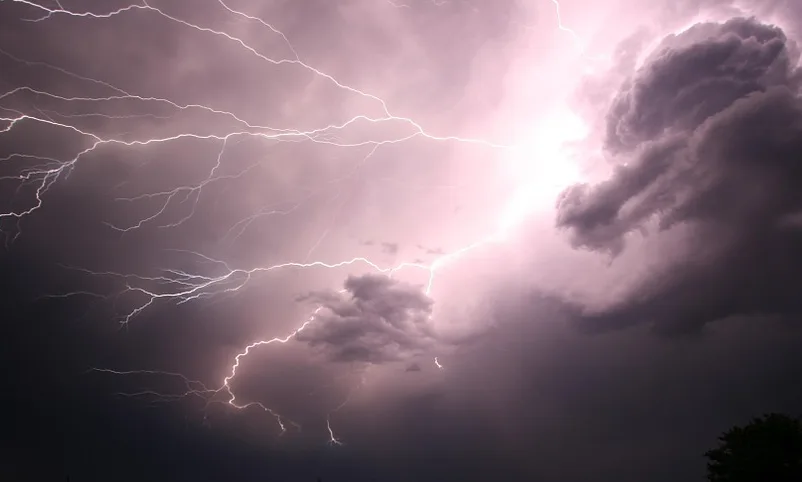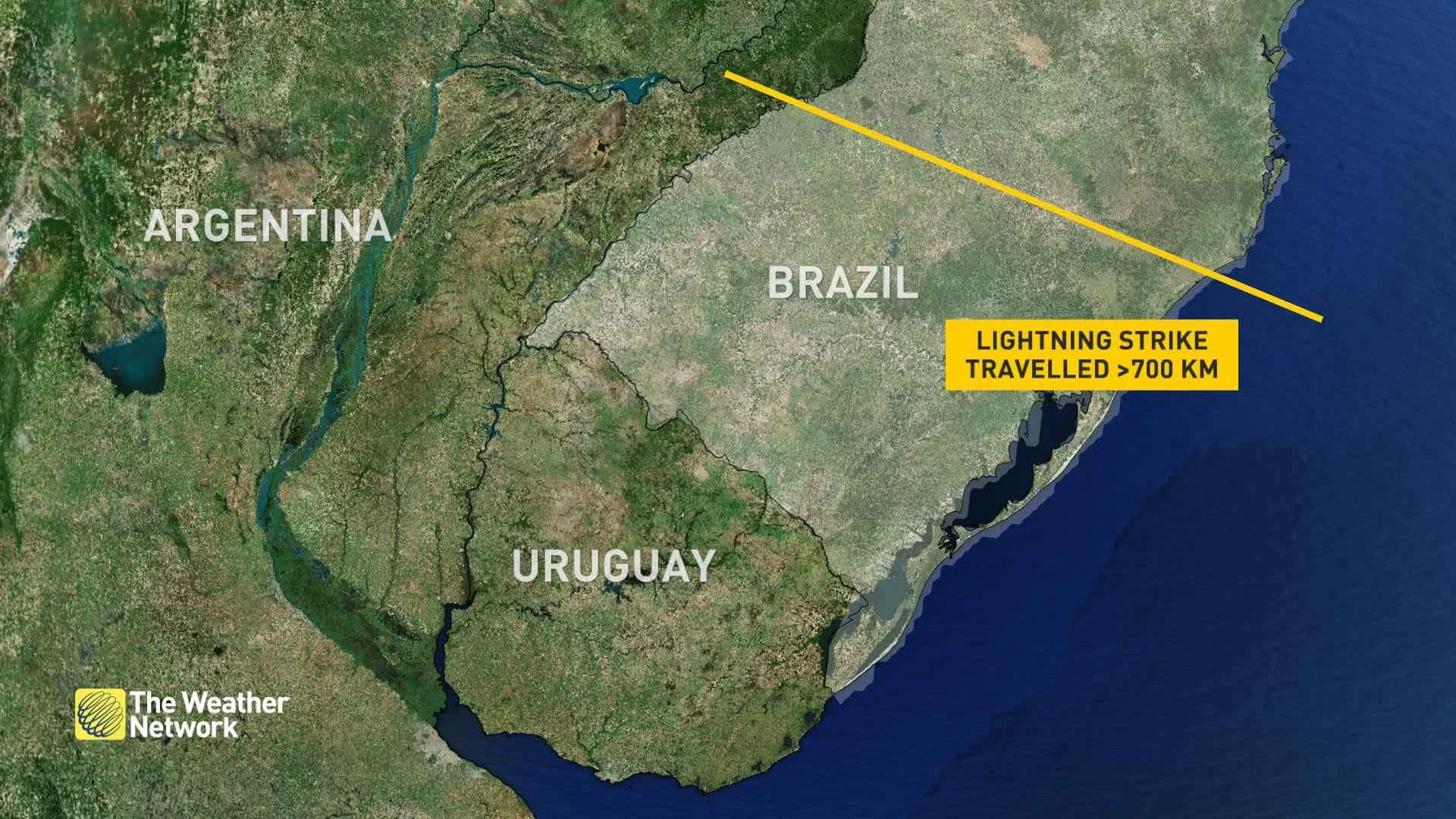
Record-setting 700-km 'megaflash' lightning bolt captured in South America
The 700-kilometre 'megaflash' was the equivalent of the bolt striking an area extending from Ottawa to Windsor, Ont.
Talk about a Halloween scare for people in Brazil in 2018.
On Oct. 31, a bolt of lightning sparked off in a thunderstorm ended up extending about 708 kilometres across the southern half of the South American country, setting a new world record, recently confirmed by World Meteorological Organization (WMO) officials.
To put that into perspective, the length of this bolt, comparatively, encompasses the distance from Ottawa to Windsor, Ont., and then some. Or it would be similar to the bolt covering an area extending from Vancouver, B.C., to Calgary, Alta., and even beyond.
SEE ALSO: Lightning strikes kill more than 100 in two Indian states
The prior record for a megaflash distance was just more than 300 kilometres, captured in Oklahoma on June 20, 2007. At that distance, the bolt would have roughly zipped through an area from Winnipeg, Man. to Dryden, Ont.

If that wasn’t electrifying enough, another strike in Argentina on March 4, 2019 lasted for 16.73 seconds, breaking the previous record by nearly nine seconds. The two record-shattering South American bolts were verified as megaflashes, a term designated to lightning discharges that reach hundreds of kilometres in length.
The findings were published in American Geophysical Union, which explained that the ideal conditions for a megaflash involve large, electrified-clouds with low flash rates that are associated with more potent thunderstorm cells.
“These are extraordinary records from single lightning flash events. Environmental extremes are living measurements of what nature is capable, as well as scientific progress, in being able to make such assessments," said professor Randall Cerveny, WMO chief rapporteur of weather and climate extremes, in a WMO press release. "It is likely that even greater extremes still exist, and that we will be able to observe them as lightning detection technology improves.”
According to the WMO, the two record-busting lightning bolts were captured by the Geostationary Operational Environmental Satellites (GOES). Prior records were determined with data compiled by ground-based lightning-mapping networks.
Sources: WMO | American Geophysical Union











